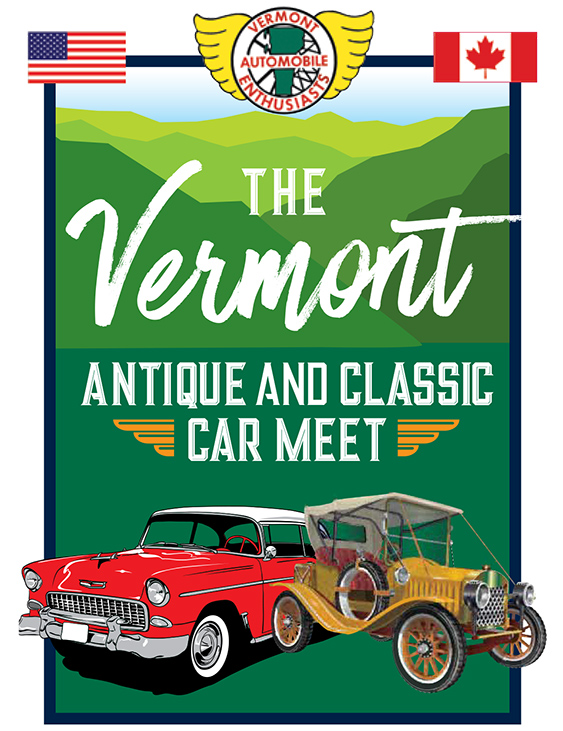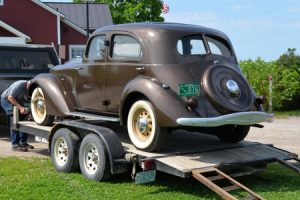 Robert C. Hupp, who had worked for Olds, Ford and Regal, introduced his own car in Detroit in 1909. Called the Model 20, it was quite a success in the lower price class. As a promotional stunt and right off the assembly line, November 10, 1910, a Hupmobile left on a 48,600 mile around the world trip to 26 different countries, returning on January 24, 1912.
Robert C. Hupp, who had worked for Olds, Ford and Regal, introduced his own car in Detroit in 1909. Called the Model 20, it was quite a success in the lower price class. As a promotional stunt and right off the assembly line, November 10, 1910, a Hupmobile left on a 48,600 mile around the world trip to 26 different countries, returning on January 24, 1912.
In the meantime, Robert Hupp left the company in September 1911 following a dispute within the company. As Ranson Eli Olds did, when he left Oldsmobile and established REO (his initials) Hupp established R.C.H. (his initials) Automobile Company, but was not very successful.
Hupmobile did quite well through the teens and twenties with 1928 sales of 65,862. However, sales fell to 50,579 in 1929 (when over 100,000 was expected) and with the Great Depression Hupp was in trouble, as were many other automobile companies. But Hupmobile still had a couple of bright spots ahead, if not in sales and the bottom line, certainly in styling. In 1932 Hupp came out with their “form fitting” fenders (also referred to as the cycle-fendered Hupps) as well as chrome-plated wheel discs. This car was designed by industrial designer Raymond Loewy and was extremely handsome.
Raymond Loewy is probably most famous for his design work for Studebaker. Beginning in 1938, he and his team designed several notable Studebakers including the 1953-54 Starlight Coupe and Starliner Hardtop, the 1955 Speedster and the Hawk models beginning in 1956. Later in 1963, Loewy was responsible for the design of the Studebaker Avanti.
Also designed by Loewy were the Aerodynamic Hupmobiles introduced in 1934. In terms of design, these cars were several years ahead of the square, box-like designs of most four door sedans of the time. Hupmobile itself still produced these “square” models along with the sleek aerodynamic model.
The Aerodynamic Model featured a fastback design that made the 4 door appear like a 2 door sedan with the spare tire and cover molded into the sloping trunk lid. Could this have been the inspiration for the continental kit of the 50’s? It had a split rear window, maybe the inspiration for the ’63 Corvette coupe. It had a 3-piece windshield, an early version of the wrap-around windshield of the 50’s. It also had built in headlights which, except for the Chrysler and Desoto “Airflows” and Pierce Arrow, other cars didn’t have until 1938-41. Cadillac was one that waited until 1941.
I believe one of the problems leading to the demise of Hupmobile was the expense required to develop all the models and body styles they offered. In 1932 there were 8 different models (two 6-cyl. and six 8-cyl.) featuring from 1 to 6 body styles for each model. In 1934 there were 7 models (four 6-cyl. and three 8-cyl.) with 2 to 6 body styles in each model.
There were three 121″ wheel base 6 cyl. models in 1934: Series KK-421A (90 HP) with 6 different bodies; series K-421 (90 HP) with 4 bodies; series 421-J (93 HP) with 3 bodies.
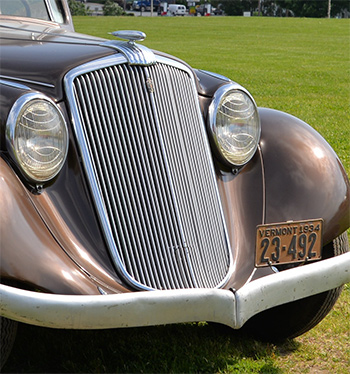 The car I have is a Series 421-J sedan. The original owner was a gentleman from West Townsend, Vermont. My dad tried to buy the car in the ‘60s, but it wasn’t for sale. Some time later it was sold to Donald Miller of Miller Construction in Windsor, Vermont. My dad bought it from him and a friend, Milton Norris, restored it – probably in the early 70’s. Milton, had recently retired from one of the machine tool shops in Springfield and did an amateur restoration including mechanical work, body work (rust) and paint. Some of the chrome was replated, but the bumpers were simply painted silver. The interior is still original. We brought it to Derby Line in the late ’80s and used it for several years touring and going to shows in Sherbrooke, Que., Enosburg, Newport and other local events. It hasn’t been used for several years now but deserves to be back on the road again with a better paint job and chrome bumpers!!
The car I have is a Series 421-J sedan. The original owner was a gentleman from West Townsend, Vermont. My dad tried to buy the car in the ‘60s, but it wasn’t for sale. Some time later it was sold to Donald Miller of Miller Construction in Windsor, Vermont. My dad bought it from him and a friend, Milton Norris, restored it – probably in the early 70’s. Milton, had recently retired from one of the machine tool shops in Springfield and did an amateur restoration including mechanical work, body work (rust) and paint. Some of the chrome was replated, but the bumpers were simply painted silver. The interior is still original. We brought it to Derby Line in the late ’80s and used it for several years touring and going to shows in Sherbrooke, Que., Enosburg, Newport and other local events. It hasn’t been used for several years now but deserves to be back on the road again with a better paint job and chrome bumpers!!
I’ve had comments on the car from: “that’s the ugliest car I’ve ever seen” to “Wow! What awesome styling”. I guess beauty is in the eye of the beholder. The design was deemed good enough to get our Hupp recognition for “Best Original Design” at the “Art of the Car” themed car show at Shelburne Museum in 2016. Good Job, Mr. Loewy!
As for the fate of the Hupmobile, it was all downhill. There was never a 1937 model introduced, but a few cars were built from left over 1936 parts. In 1938, for $45,000, Hupmobile purchased the dies, tools, etc. that were used for the defunct 810/812 Cord hoping this could be their salvation.
The Franklin Company had sold about 43,000 cars by 1919 and had the process fairly well perfected by then. They were using 6 cylinder engines in 1906 for some of their models and by 1914 all Franklins had six cylinder engines. Managing the air flow was important in these air cooled vehicles and until 1922 all that was required was a fan between the engine and the transmission to help “pull” the air through. As the horse power increased they moved the fan to the front of the engine and continued to use the cylinder fins to force air down past the hot cylinders, this was called a “down-drafter”. As the 6 cylinder engine power grew, from 24 HP to over 100HP, the company changed again in 1930, to keeping the fan in the front but now forcing air “across” the engine thus calling it a side drafter. A much more efficient way to keep the engine cool.
It appears George and Eva began a family tradition with the Franklin car. Over the years they had the 1919, a 1923 sedan and two 1929s sedans. One of those 29s later was reworked into a pickup truck which also sits in David’s garage. David’s dad, Richard, added a 1930 and 1931 sedan to the family Franklin history and then David took his turn when he was 15 years old, when he purchased a used 1930 sedan for $45.00. David also bought a ’31 roadster at one point bringing the count to eight Franklins.
Richard was an engineer and loved to tweak things and make them better. While the 1919 was in his possession he added an electric fuel pump with a pressure regulator, to keep the carburetor from handling anything over one and a half pounds of fuel pressure. He also added a fuel pressure and a vacuum pressure gauge to the dash. The ignition switch has an extra position so when you engage the starter a second battery is wired in to have 12 volts. Once the engine is running, the switch is moved to the 6 volt position.
It is probably not totally unusual for an automobile to be purchased new and be in a family for ninety eight years, but Wheel Tracks did not want to miss out telling this story.
As you have read in our classifieds the 1919 is for sale. David and Cereta need to down-size and have decided to try to find a good home for the old girl, that still runs perfectly. The hope is that the car stays in the VAE family and will have many more stories to tell years from now.
How many of you will be watching for those Rutland addresses the next time you go through. Please take a picture of what is there now and send them to Wheel Tracks.
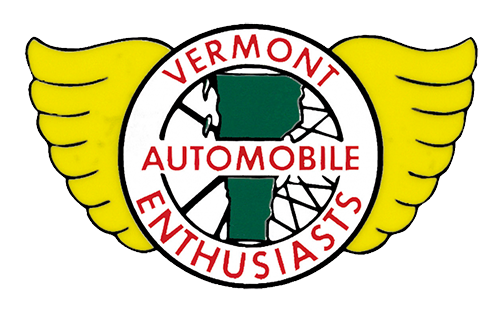
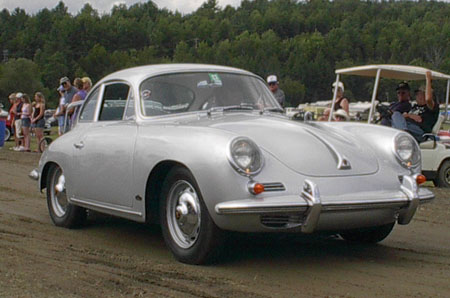
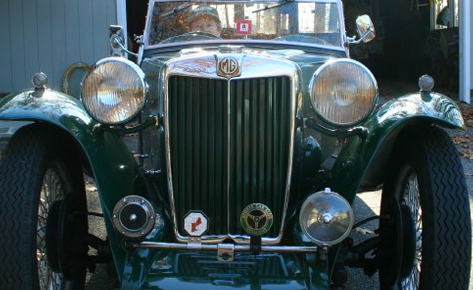
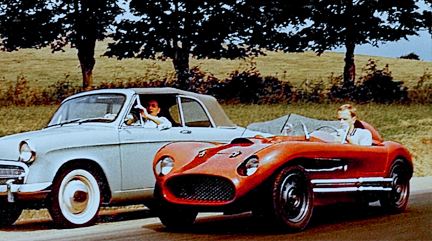
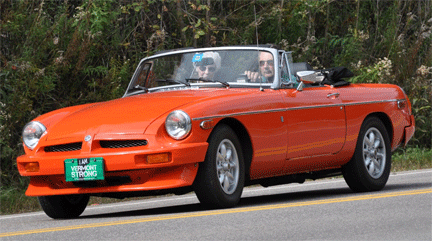
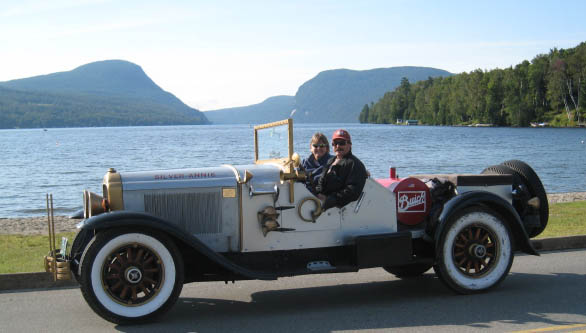
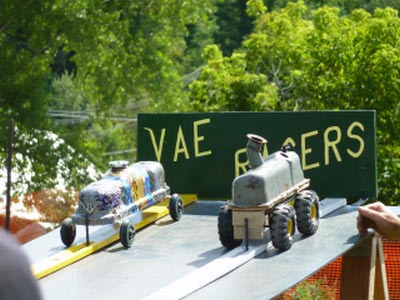
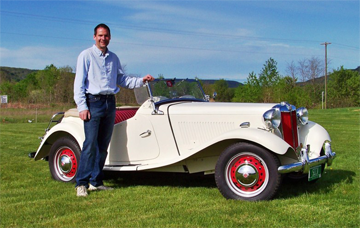
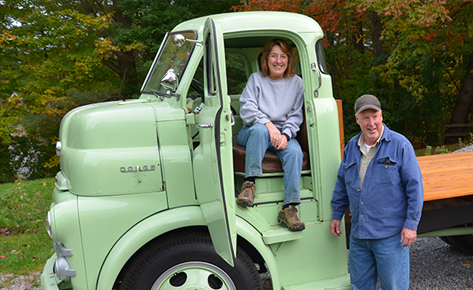
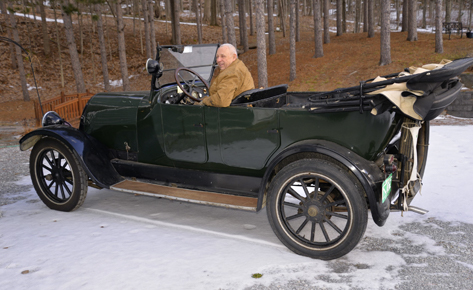

 Mary Jane Dexter tells the story of going to Germany with her husband Bill to pick up their new, factory fresh, VW like it was yesterday. In fact the poppy-red VW Convertible Beetle is 50 years old now and still sits in Mary Jane’s garage. Ninety one years old Mary Jane said the Beetle heads to her Colorado nephew, Russell Dent, when she decides it needs a new owner.
Mary Jane Dexter tells the story of going to Germany with her husband Bill to pick up their new, factory fresh, VW like it was yesterday. In fact the poppy-red VW Convertible Beetle is 50 years old now and still sits in Mary Jane’s garage. Ninety one years old Mary Jane said the Beetle heads to her Colorado nephew, Russell Dent, when she decides it needs a new owner.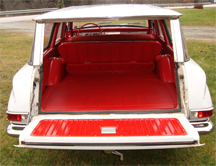
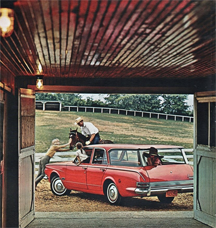 Editor’s note… To the left is a Plymouth sales ad from 1963. The ad discussed the many factory tests performed before release to the public. It read:
Editor’s note… To the left is a Plymouth sales ad from 1963. The ad discussed the many factory tests performed before release to the public. It read: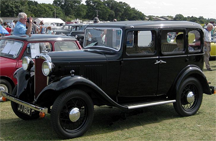 Hillman is a name not well known in the automotive field anymore. Hillmans are British and like most British manufacturers of automobiles, the Hillman Motor Car Company is defunct. The last Hillman imported into this country was the Super Minx of the mid 1960s. The company was still being run by Lord Rootes, a founder, at the time. The Hillman Motor Car Company began in 1907. Previous to that, the company had made sewing machines and bicycles. Hillman played a role in pioneering the American automobile market, opening doors for other makes back in the days when those funny foreign cars drove a lonely road in this country.
Hillman is a name not well known in the automotive field anymore. Hillmans are British and like most British manufacturers of automobiles, the Hillman Motor Car Company is defunct. The last Hillman imported into this country was the Super Minx of the mid 1960s. The company was still being run by Lord Rootes, a founder, at the time. The Hillman Motor Car Company began in 1907. Previous to that, the company had made sewing machines and bicycles. Hillman played a role in pioneering the American automobile market, opening doors for other makes back in the days when those funny foreign cars drove a lonely road in this country.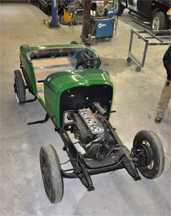 The picture here was taken in Wendell Noble’s barn in Milton, Vermont about a week ago. As you can see much more work remains but it should be easy to see the exhaustive work that has been done.
The picture here was taken in Wendell Noble’s barn in Milton, Vermont about a week ago. As you can see much more work remains but it should be easy to see the exhaustive work that has been done. What is a mile long, about a third of a mile wide, has just under 2000 vendor stalls and a car corral with 450 really neat cars for sale?
What is a mile long, about a third of a mile wide, has just under 2000 vendor stalls and a car corral with 450 really neat cars for sale?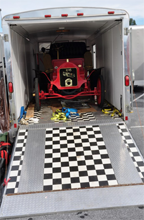
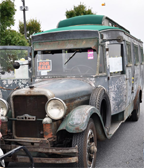
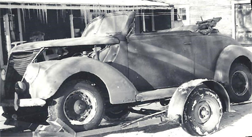
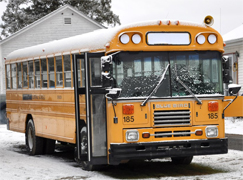 How do we raise the funds to complete our mobile museum? Checking with our treasurer there have been about $3000.00 contributed to date. You will soon have your chance to throw a few coins into the contribution pot. A fund raising campaign is being prepared as we speak.
How do we raise the funds to complete our mobile museum? Checking with our treasurer there have been about $3000.00 contributed to date. You will soon have your chance to throw a few coins into the contribution pot. A fund raising campaign is being prepared as we speak.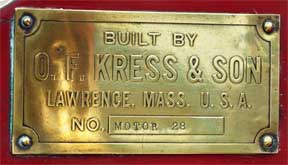 I first discovered the fire truck in 1974 in a shed in Washington, Vermont. It belonged to Frank Bushey, a school teacher from Bloomfield, Conn. Frank had purchased it to use in his Gremlin Camp for Young Boys. Instead it had rested in the shed for 23 years. I had surveyed and designed a pond for Frank at the time. A couple years later I was working on two more ponds in Orange and Washington and I stopped to visit with Frank while traveling by. I inquired when he was going to get the fire truck out and get it running? His answer.. “I’m going to sell it”. I agonized for a couple days and much to my wife, Shirley’s objections I bought it….I still loved her though . The date July 29, 1976. When I went to bring the truck home Frank said he would get the headlights. He had hidden them in a closet under a pile of house-hold goods, so as he said, “old man Miller couldn’t steal them” (A K Miller the Stutz man lived a mile away.) The lights were Gray and Da-vis 1912-13 Cadillac brass. My son, Tim, and I towed it home and began working on it. We tinkered on the motor and had it running in short order. Then began the process of restoring it. We disassembled the body, fenders and sand blasted everything. It was painted and put back together. As fate would have it, the fire chief from East Berkshire, Norm Lavallee, was at the Middlesex Fire Equipment where Tim worked at the time and he mentioned I had their first fire truck. Norm looked up some old pictures of the truck and told me to come up and we could search in the old fire house. We found most all of the old brass rails and fittings that had been taken off the truck when they sold it. What a discovery!!
I first discovered the fire truck in 1974 in a shed in Washington, Vermont. It belonged to Frank Bushey, a school teacher from Bloomfield, Conn. Frank had purchased it to use in his Gremlin Camp for Young Boys. Instead it had rested in the shed for 23 years. I had surveyed and designed a pond for Frank at the time. A couple years later I was working on two more ponds in Orange and Washington and I stopped to visit with Frank while traveling by. I inquired when he was going to get the fire truck out and get it running? His answer.. “I’m going to sell it”. I agonized for a couple days and much to my wife, Shirley’s objections I bought it….I still loved her though . The date July 29, 1976. When I went to bring the truck home Frank said he would get the headlights. He had hidden them in a closet under a pile of house-hold goods, so as he said, “old man Miller couldn’t steal them” (A K Miller the Stutz man lived a mile away.) The lights were Gray and Da-vis 1912-13 Cadillac brass. My son, Tim, and I towed it home and began working on it. We tinkered on the motor and had it running in short order. Then began the process of restoring it. We disassembled the body, fenders and sand blasted everything. It was painted and put back together. As fate would have it, the fire chief from East Berkshire, Norm Lavallee, was at the Middlesex Fire Equipment where Tim worked at the time and he mentioned I had their first fire truck. Norm looked up some old pictures of the truck and told me to come up and we could search in the old fire house. We found most all of the old brass rails and fittings that had been taken off the truck when they sold it. What a discovery!! “Don Adams’ Doodlebug”
“Don Adams’ Doodlebug”